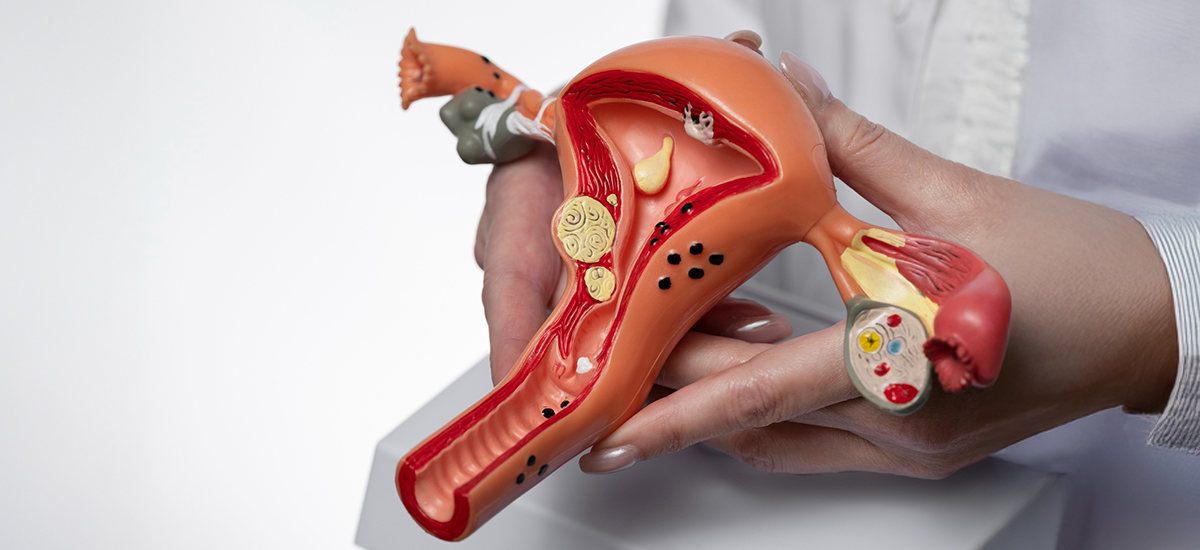Categories 
Latest Blog

Fibroids During Pregnancy: Causes, Risks, and a Calm, Step-by-Step Plan
Fibroids are benign muscle growths in the uterus. Many pregnancies continue normally. Risk depends on size, number, and location. Typical issues are pain from degeneration, pressure symptoms, a low-lying placenta, baby’s position changes, and heavier bleeding at birth. C
Read More
False Pregnancy (Pseudocyesis): Causes Explained and How Doctors Confirm It
“False pregnancy” or pseudocyesis is a condition where someone truly feels and shows signs of pregnancy (missed periods, breast changes, belly growth) but there is no fetus. The cause isn’t one thing. It’s usually a mind–body loop: strong desire or fear of pregna
Read MoreAll blogs

Annual Gynecology Screening: What to Do Each Year (and When) for Women’s Health
An annual gynecology screening is your once-a-year checkpoint for prevention, early detection, and planning. You’ll review periods, contraception, fertility goals, breast and pelvic health, vaccines, and mental wellbeing. Cervical screening starts at 21; from 30–65
Read More
Low Platelets in Pregnancy: Safe, Natural Ways to Support Counts (and When to Act)
If you are pregnant and a recent test showed low platelets, this page is for you. You’ll learn safe ways to support platelet production in pregnancy, the exact thresholds that need a same-day call, and how your delivery plan is set step by step. First, confirm why pl
Read More
How Long Does the Egg Freezing Process Take? A Clear Week-by-Week Timeline
From your period to eggs safely frozen, the egg freezing process usually spans about 2–3 weeks of stimulation and monitoring, followed by a short, sedated retrieval and same-day vitrification. Many clinics use 2–3 weeks of birth-control pills first to sync timing (o
Read More
Stage 4 Endometriosis: What It Means, How to Relieve Pain, and Your Fertility Options
Stage 4 endometriosis means many deep implants, large ovarian cysts called endometriomas, and dense adhesions that can pull the ovaries, tubes, uterus, and bowel together. Pain can be intense, yet pain level does not always match stage. Fertility is often affected because an
Read More
Female Fertility, Explained by a Three-Link Chain: Egg, Window, Path
Female fertility is the chance of pregnancy in a cycle when three links line up: an ovary releases an egg, sex happens in the fertile window, and the path (tubes and uterus) is open and welcoming. You can spot the window with LH strips and confirm ovulation with a mid-lutea
Read More
Heart Attack Symptoms in Women vs Men: Spot the Differences and Act Fast
A heart attack means a heart artery is blocked. Both women and men often feel chest pressure that may spread to the arm, jaw, back, or upper belly. Women are more likely to also have shortness of breath, nausea, unusual fatigue, or back/neck discomfort. Men tend to have ea
Read More
What Are the Most Common Childhood Cancer Symptoms?
Most childhood cancer symptoms look like everyday illness at first. Worry rises when signs persist, progress, or cluster. Call your doctor if you see: fevers that don’t settle, unusual bruising/bleeding, pale tiredness, bone or joint pain/limp, lumps that grow or don’t
Read More
Can Periodic Breathing Be Treated? Use the Clock & Colour Rule
Most periodic breathing in newborns needs no treatment. Short pauses of 5–10 seconds followed by a few faster breaths are common in the first months. Use one rule: watch the clock and your baby’s colour. Pink and calm with brief pauses is normal. Call your doctor if pa
Read More
Newborn Sneezing: What’s Normal, What Needs a Call, and How to Clear a Tiny Nose
Most newborn sneezing is normal housekeeping. Babies breathe mainly through the nose, so they sneeze to clear milk mist, mucus, or dust. It is fine if breathing is easy, feeds are steady, and there is no fever. Call your doctor for fever at or above 38°C, fast or hard bre
Read More




